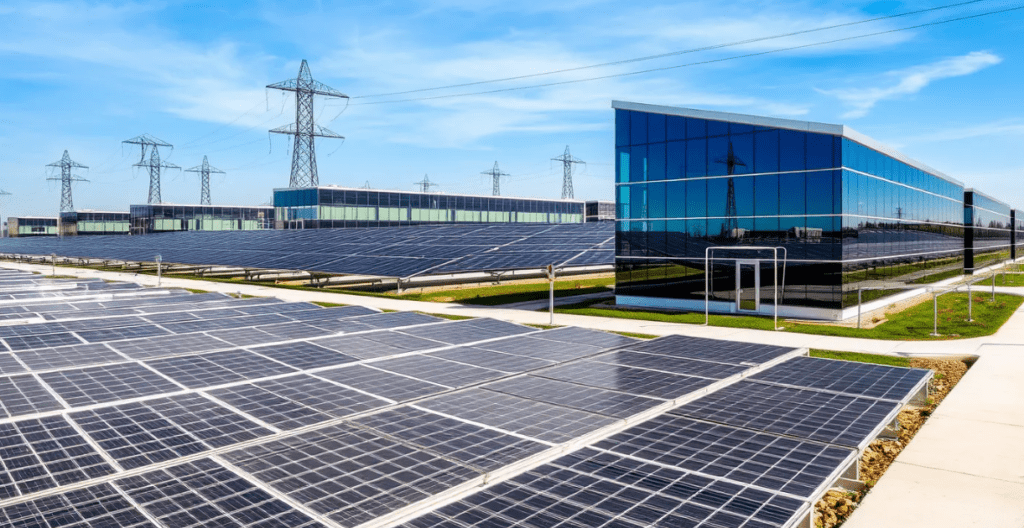
Unlocking the Power: Dynamic Dialogue on Energy Storage
Energy storage is the cornerstone of modern electrical grids. But how can we make it smarter, more efficient, and longer-lasting? Enter Artificial Intelligence (AI), a game-changer in the optimization of storage systems.
AI and the Future of Energy Storage
AI is not just a buzzword; it’s transforming how we manage and utilize energy storage systems. From predicting peak usage times to enhancing the longevity of batteries, AI’s role is pivotal.
Predictive Power: Timing is Everything
One of the most significant benefits of AI in energy storage is its ability to predict the best times to store and release energy. Using machine learning algorithms, AI can analyze vast amounts of data to forecast energy demand patterns. This ensures that energy storage systems operate at peak efficiency, reducing waste and improving reliability.
Enhancing Efficiency and Longevity
Efficiency is crucial for energy storage systems, especially when dealing with renewable sources like solar and wind, which are intermittent by nature. AI optimizes the charging and discharging cycles of batteries, ensuring that they work efficiently and last longer. By preventing overcharging and deep discharges, AI helps maintain battery health, extending their lifespan and reducing costs.
The Mechanics of AI in Storage Systems
Machine learning and deep learning are at the heart of this revolution. These technologies enable systems to learn from historical data, identify trends, and make informed decisions. For instance, AI can balance the load between multiple storage units, ensuring even wear and avoiding overuse of any single battery.
Real-Time Monitoring and Adjustments
Real-time monitoring is another area where AI shines. By continuously analyzing the performance of energy storage systems, AI can make instant adjustments to optimize performance. This is particularly important in preventing failures and maintaining the integrity of the storage systems.
Real-World Applications: AI in Action
Tesla’s Powerwall and Powerpack
Tesla has integrated AI into its Powerwall and Powerpack products, which are used in both residential and commercial settings. These systems use AI to manage energy storage and distribution, optimizing for efficiency and cost savings. For instance, during peak demand periods, the AI can predict when energy is most needed and release stored energy to the grid, reducing the load on the electrical infrastructure.
Google’s Data Centers
Google’s data centers are another example of AI-driven energy optimization. Using DeepMind’s AI, Google has managed to reduce the energy used for cooling its data centers by up to 40%. The AI continuously monitors the cooling systems and adjusts settings in real-time to ensure maximum efficiency.
Grid-Scale Batteries in Australia
In South Australia, the Hornsdale Power Reserve, powered by Tesla’s batteries and managed by AI, has proven to be a game-changer for energy storage. The system helps stabilize the grid by providing rapid energy responses during peak demand or when there are disruptions in supply. The AI-driven system has significantly reduced costs and improved the reliability of the energy grid.
Sonnen’s Virtual Power Plant
Sonnen, a German energy storage company, has developed a virtual power plant that uses AI to connect thousands of home battery systems. The AI manages the collective energy storage and distribution, creating a decentralized energy network. This system not only optimizes energy usage but also provides a backup during outages, ensuring a reliable power supply.
Personal Applications: AI at Home
Smart Home Energy Management
AI-driven energy storage isn’t just for big companies and power grids. Homeowners can also benefit from this technology. Smart home energy management systems use AI to optimize energy consumption, balancing the use of power from the grid with stored energy from home batteries. For example, AI can predict when electricity rates are low and charge the battery accordingly, then switch to battery power during peak rates to save money.
Nest Learning Thermostat
Google’s Nest Learning Thermostat uses AI to learn your schedule and preferences, adjusting the temperature to save energy and reduce costs. By integrating with home energy storage systems, it can further optimize when to use stored energy for heating or cooling, ensuring efficient use of resources.
Home Solar Panel Systems
AI can also enhance home solar panel systems. Companies like SunPower use AI to predict weather patterns and energy usage, optimizing when to store solar energy and when to use it. This not only maximizes the efficiency of solar panels but also ensures that homeowners get the most out of their investment.
Reviewing Home Applications: A Closer Look
Tesla Powerwall: A Comprehensive Solution
The Tesla Powerwall is an excellent example of how AI can revolutionize home energy storage. It offers seamless integration with solar panels, enabling homeowners to store excess energy generated during the day and use it at night. The AI-driven system ensures that the battery is used efficiently, reducing energy bills and dependency on the grid. Users have praised its reliability and the savings it provides over time.
Nest Learning Thermostat: Smart Savings
The Nest Learning Thermostat is more than just a programmable thermostat. It learns your habits and preferences, automatically adjusting the temperature for comfort and savings. Users report significant reductions in energy bills, thanks to its intelligent scheduling and real-time adjustments. The integration with other smart home devices and energy storage systems enhances its efficiency and convenience.
SunPower Solar Systems: Maximizing Solar Potential
SunPower‘s AI-enhanced solar systems provide homeowners with detailed insights into their energy production and consumption. The AI can predict weather conditions and adjust energy storage strategies accordingly, ensuring that solar energy is used optimally. Homeowners appreciate the transparency and control the system offers, along with the environmental and financial benefits of solar power.
The Road Ahead: Challenges and Opportunities
While AI offers significant advantages, integrating these systems is not without challenges. Issues like data security, the initial cost of implementation, and the need for continuous updates can be barriers. However, the long-term benefits, such as reduced operational costs and enhanced system reliability, make it a worthwhile investment.
Collaboration and Innovation
The future of AI in energy storage relies on collaboration between tech companies, energy providers, and researchers. Continuous innovation and the development of new algorithms will drive this field forward, unlocking new possibilities for energy management.
Conclusion: Embracing the Future of Energy
AI is revolutionizing the way we manage and optimize energy storage systems. By predicting the best times to store and release energy, enhancing efficiency, and extending the lifespan of storage units, AI ensures a more sustainable and reliable energy future. As we continue to innovate and collaborate, the potential of AI in this field is limitless.
For further reading on AI’s impact on energy storage systems, check out these sources:
By leveraging the power of AI, we can make significant strides towards a sustainable energy future, optimizing how we store and use energy for generations to come.





